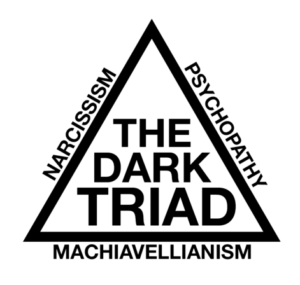Visionaries, wreckers, or something in between? Narcissism is a misunderstood trait that can be a double-edged sword for organisations.
Calling someone a ‘narcissist’ is far from a compliment. Vernacularly synonymous with egocentric and self-absorbed, it’s easy to understand why. Yet the achievements of narcissists throughout history (think Napoleon) remind us that narcissism can be a powerful leadership trait.
“Narcissism can be extraordinarily useful – even necessary,” writes Michael Maccoby in Narcissistic Leaders: The Incredible Pros, the Inevitable Cons, an influential essay published in Harvard Business Review in 2000.
It’s often narcissists, he writes, who “have the audacity to push through the massive transformations that society periodically undertakes.”
Charming yet conceited, the grandiose narcissist is the most recognisable. There are several other, less obvious types that often fly under the radar. Vulnerable (or covert) narcissists are introverted and thin-skinned, with fragile self-esteem, while the virtuous narcissist “gets a kick out of being seen as the good guy,” says James Hunt, Senior Lecturer in Leadership and Organisational Behaviour at Newcastle Business School.
More concerning are malignant narcissists – highly manipulative, exploitative, aggressive, cruel and, says Hunt, fortunately rare.
What is narcissism?
In psychiatry, clinical narcissism is a personality disorder (NPD) included in the Diagnostic and Statistical Manual of Mental Disorders. An individual must satisfy at least five out of nine DSM-V criteria to be diagnosed with NPD.
In leadership, narcissism is understood as one of the three personality types that make up the ‘Dark Triad’ (the other two are Machiavellianism and psychopathy). Subclinical narcissism is characterised by things such as intense feelings of grandiosity, a sense of entitlement and superiority over others, and a desire for dominance.
Narcissism exists on a continuum – like it or not, it’s a trait we all possess to varying degrees. It only becomes problematic when it is extreme or dysfunctional.
Maccoby makes the useful distinction between productive narcissists – creative and charismatic risk-takers, change makers and gifted strategists keen to leave a legacy – and unproductive narcissists – abrasive leaders who are prone to grandiosity and distrust.
Left unchecked, unproductive or dysfunctional narcissists can cause tremendous damage. The challenge for employers is to identify narcissists, and where possible harness their strengths and mitigate their flaws.

What narcissistic leadership looks like
Narcissism is neither ‘good’ or ‘bad’ – rather, it is a complex interplay of traits, many of which can appear suited to leadership.
On a good day, grandiose narcissists are confident, charismatic leaders, effective communicators and engaging public speakers. “They’ve got a very high need for achievement – they’re highly driven, they’re results-orientated, they’re goal achievers,” says Hunt. “They have a very intense desire to compete, so in many respects, they’re like Olympic athletes – they want to be the best.”
Narcissistic leaders often possess remarkable energy and vision. “They tend to look past the small details and focus on the big picture. And they’re willing to make tough decisions. They won’t hold back sacking 200 or 300 people if it’s going to improve the organisation.”
Celebrity CEOs like Steve Jobs show how successful highly functional narcissists can be, says Associate Professor Martin Fitzgerald, Hunt’s colleague at the Newcastle Business School.
“There is no doubt in anyone’s mind that they do it for themselves – but there’s no law in leadership that you have to be altruistic.”
On the other hand, psychologist and author Tomas Chamorro-Premuzic argues narcissism shouldn’t be valued by others, even if it’s useful for individual success. Recently, in articles, talks and a new book, he links narcissism with the under-representation of women in leadership.
“People tend to associate leadership with hyper-masculine features: kick-ass drive, megalomaniac vision, and fearless – if not reckless – risk-taking. Although there is no evidence that such an extreme profile is generally beneficial for leadership, there is no doubt that it helps men advance to the top of the corporate ladder,” he told Business Insider.
Narcissism often has a dark side that makes people very poor leaders. Those who score highly on narcissistic traits can be poor listeners, lack emotional competency and have an inflated sense of self-importance that leads to delusions of grandeur.
Importantly, their sense of grandiosity and self-belief causes them to sometimes over-reach. They need to be liked yet are hypersensitive to criticism, which they frequently disregard. “That shuts off the chance for them to improve or recognise that they might have some blind spots,” says Hunt.

Effect of narcissistic leaders
In the right setting – in a crisis, for instance, where it’s vital to inspire others and make tough decisions – a productive narcissist can help. Even the antagonistic traits of narcissism can be an asset in certain situations, argues Ramzi Fatfouta in a 2018 article published in Human Resources Management Review. For example, the narcissist’s desire for supremacy may help drive performance during high-pressure periods such as “aggressive business expansion, or the introduction of disruptive technologies.”
But, more often than not, he notes, “striving for supremacy, dominance, and power can…entail disastrous consequences.” Spectacular gains are all too often followed by extreme losses. Rodney Adler, the disgraced former HIH Insurance director, served two years in jail for his role in the company’s 2001 collapse, which left $5.3 billion in debts.
A 2013 analysis of 42 US presidents found grandiose narcissism was “a double-edged sword” associated with both effective crisis management and a propensity for unethical behaviour, including the abuse of power.
Narcissistic leaders’ willingness to exploit others and lack of empathy can wreak havoc in teams. A 2018 study found that narcissistic leaders create “malicious envy” among followers, which leads to “counterproductive work behaviour”, where employees intentionally acted against the interests of an organisation.
The researchers’ findings support theories that argue “narcissistic leaders’ self-centredness, grandiose belief systems as well as feelings of entitlement severely harm interactions with others in organisations.”
“They have a very intense desire to compete, so in many respects, they’re like Olympic athletes – they want to be the best.”
Managing a narcissist
The first step to managing narcissism is learning how to identify it. There is a lack of this ability in modern workplaces, says Fitzgerald.
Because functional narcissists display many of the traits we expect of leaders, instead of identifying the tell-tale signs of narcissism in a candidate, often we see someone who is driven, charismatic and able to make tough decisions.
The result is that narcissists tend to go undetected, which means they can’t be managed effectively. To better reveal narcissists in the recruitment process, Fatfouta advises using a combination of assessment tools. Narcissists typically shine in interviews, it’s the perfect setting for them to switch on the charisma.
A “trimodal approach” – judicious use of psychometric testing and other key performance indicators alongside interviews – can provide a more complete picture of a candidate’s true leadership capacities.
Talk to previous colleagues and look for observable behaviours of narcissism, suggests Fitzgerald. “It’s about triangulating evidence – don’t rely on one test.”
Fitzgerald says self-awareness is key around narcissists. “Beware of the negative emotional toll of working with a narcissist. They’ll berate you, put you down, and dismiss your ideas. In the face of this type of harmful behaviour, remember it’s not about you – it’s about them. The people who I see fall over with narcissistic leaders are those who take it personally. You’ve got to have strong resilience.”
Managing a narcissist, although difficult, is possible. “They feel themselves as special, and the rules don’t apply,” Fitzgerald says. One strategy is the use of group dynamics to influence behaviour. It has to be the right group – made up of peers, not subordinates – that has the support of the CEO, he says. “The narcissist slowly realises, ‘If I want the power, I’m going to have to conform.’”
Fatfouta points to evidence that mindfulness can help narcissistic leaders identify and regulate their negative emotions, which can then improve their relationships with others.
At the end of the day, recruiting a narcissist is a gamble. The challenge for organisations, says Fitzgerald, is to determine whether a narcissist’s potential destructive traits is a fair trade for their talent.
“Who can imagine Microsoft without Bill Gates or Apple without Steve Jobs? But I’m sure investors would love to see HIH without Rodney Adler.”
This article originally appeared in the July 2019 edition of HRM magazine.


As a coach (who is also a practicing psychotherapist), I find working with narcissists in an organisational space is fraught with problems. (There I have said it). The main problem in the coaching space is that we want the narcissistic leader to perform to their best potential (which may mean that we almost encourage the narcissistic leader to become more manipulative and attain what we/they want with even more drive and effect). Some coaches skirt around the issue of the leader’s narcissism or narcissistic traits due to fear (?), or believe that is not their role to say so i.e.… Read more »
I appreciate Menaka Cooke’s response below. It is a very difficult situation dealing with a self-centered, ego-maniacal individual subtle or not. These people cause so much trauma at work and at home and at large in society… As a psychotherapist myself, and an HR practitioner, I can suggest (1) that feedback must bravely be given, consequences outlined, and the issue must be handled appropriately regarding the individual’s position and nature (a qualified mental health practitioner should be part of the team giving the feedback to give it the requisite clout). There is no point in skirting about the issue, although… Read more »
“The first step to managing narcissism is learning how to identify it. There is a lack of this ability in modern workplaces, says Fitzgerald.” The first step is having a HR team that understands narcissism exists in some of their staff and more than likely, the ones they praise the most! Being at the receiving end of a narcissistic boss, who used highly emotive language to character assassinate me (and accusing me of “mental health issues”) which were later noted as laudable by a toe cutting workplace psychiatrist “unremarkable normal”, I was off work on full pay for over 2… Read more »